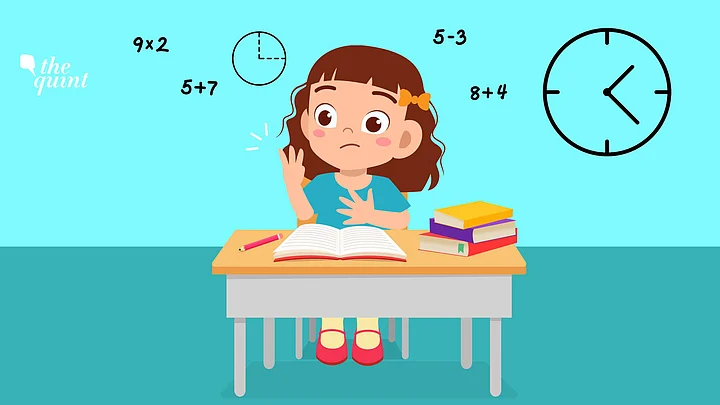The coronavirus pandemic that shut schools across the country for nearly nine months has not only deprived children of education, but also made many forget basic mathematics and reading skills to the extent that about 11 percent students in Class 4 have “lost the ability to read the time correctly from a clock,” reveals a study conducted by the Azim Premji Foundation.
Titled Loss of Learning During the Pandemic, the report is based on a study that was conducted in January 2021, covering over 16,000 students across 1,137 schools in Chhattisgarh, Karnataka, Madhya Pradesh, Rajasthan and Uttarakhand.
Startling as they are, the findings come at a time when several reports have indicated that 27 to 80 percent had no access to online classes, due to an absolute lack of smartphones and other devices.
Why is the study important?
According to the study, nearly 92 percent children between Classes 2 and 6 had completely forgotten atleast one specific ability in language. Similarly, around 82 percent had lost one specific ability in Mathematics.
For instance, while around 48 percent children in Class 3 lost the ability to solve problems using subtraction operations, around 50 percent lost the ability to orally answer questions after listening to a poem.
Hence, apart from learning very little of what they should have in 2020, students have forgotten the basics that will prevent them from learning more complex subjects across all subjects.
What numerical skills have students lost?
The abilities that students between Classes 2 to 6 lost include “identification of numbers, using basic arithmetic operations for daily life problem solving and description of 2D/3D shapes for Classes 2 and 3, and measurement and data handling operations in addition to place value, fractions and arithmetic operations.”
While in Class 2, around 20 percent of the students had forgotten and thereby “lost the ability” to identify single-digit number, in Class 3, around 37 percent couldn’t add two-digit numbers pictorially.
Shockingly, as high around 70% students in Class 4 couldn’t identify the greatest or smallest three-digit number using place value and around 55% in Class 5 lost the ability to multiply two-digit numbers.
In Class 6, around 60 percent students failed to differentiate between and identify right, obtuse and acute angle, while 40 percent couldn’t perform division of four-digit numbers by a single digit number.
What other learning losses have students suffered?
While in Class 2, around 71 percent of the students couldn’t identify a word in print, 50 percent lost the ability to orally answer questions after listening to a poem in Class 3. Not just this, around 46 percent students in Class 3 couldn’t express views about a given picture in written form.
Around 43 percent students in Class 6 failed to answer questions based on a passage, while 23 percent lost the ability to read the contents of a newspaper.
In the same class, around 54 percent could not write their views on various events happening around them, while around 31 percent lost the ability to read from non-text book material with comprehension.
What were the learning levels before?
Although having a completely different dataset and time period, the Annual State of Education Report, 2019, too highlighted reading and mathematical deficiencies among children.
While in that report, around 65.2 percent students in Class 2 could read Class 1 level text, the report presented by APF in January 2021 says that 71 percent couldn’t identify a word in print.
According to ASER 2019, around 50 percent children in Class 3 could read Class 1 level text, around 67% of the children lost the ability to complete words given in print format in January 2021.
Similarly, while in ASER 2019, about 11.6 percent students in Class 2 could not even read single digits, in APF’s 2021 report, around 20 percent faced the same problem.
These trends suggest that while learning levels were already poor in the country, they have further worsened by closure of schools and the ensuing digital divide.
